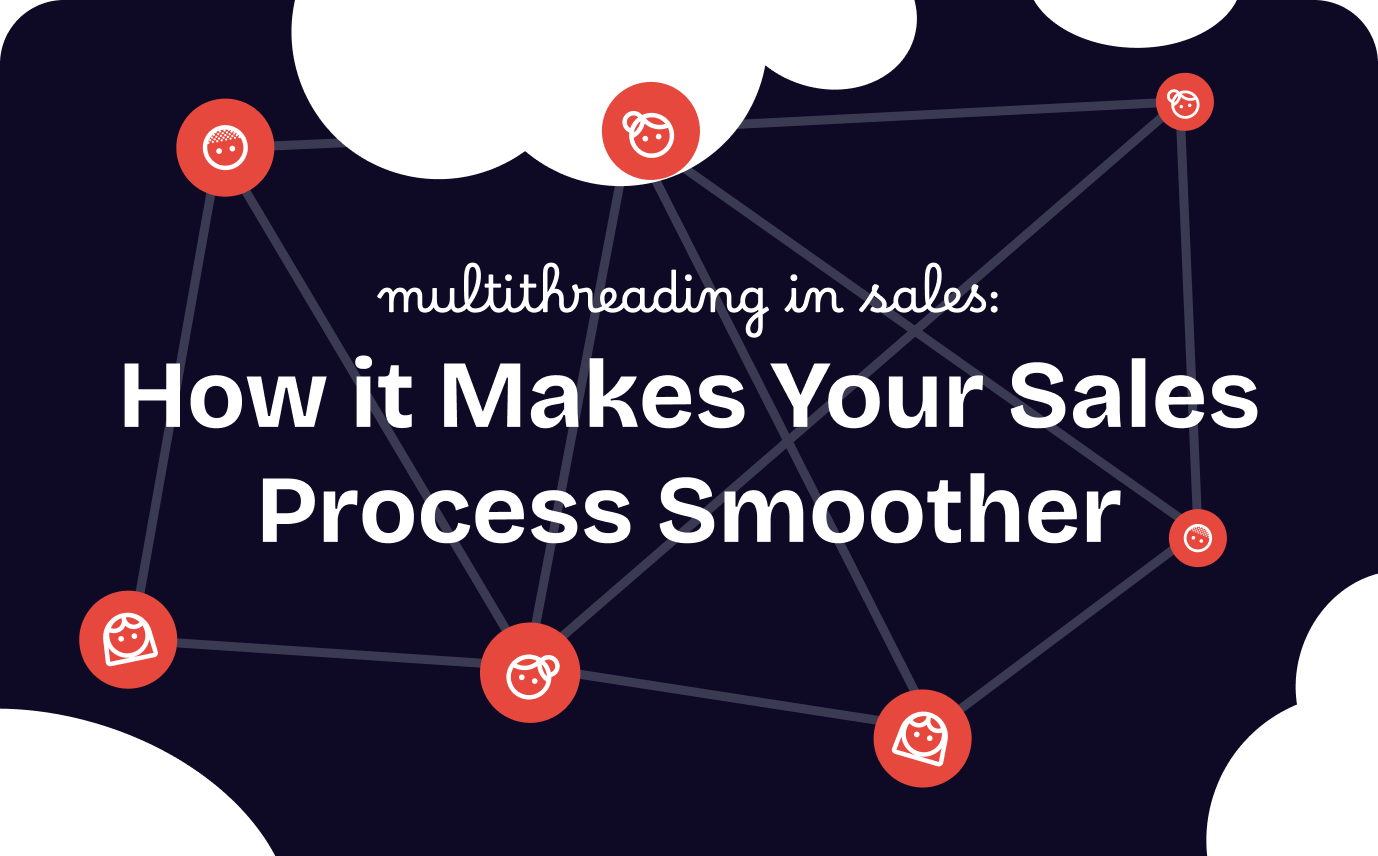Multithreading in sales is all about creating multiple connections within a company to build stronger relationships and open up more opportunities.
In this article, we’ll dive into why multithreading matters, the benefits it brings, and some practical tips to help you use it effectively and boost your sales success.
What is multithreading in Sales?
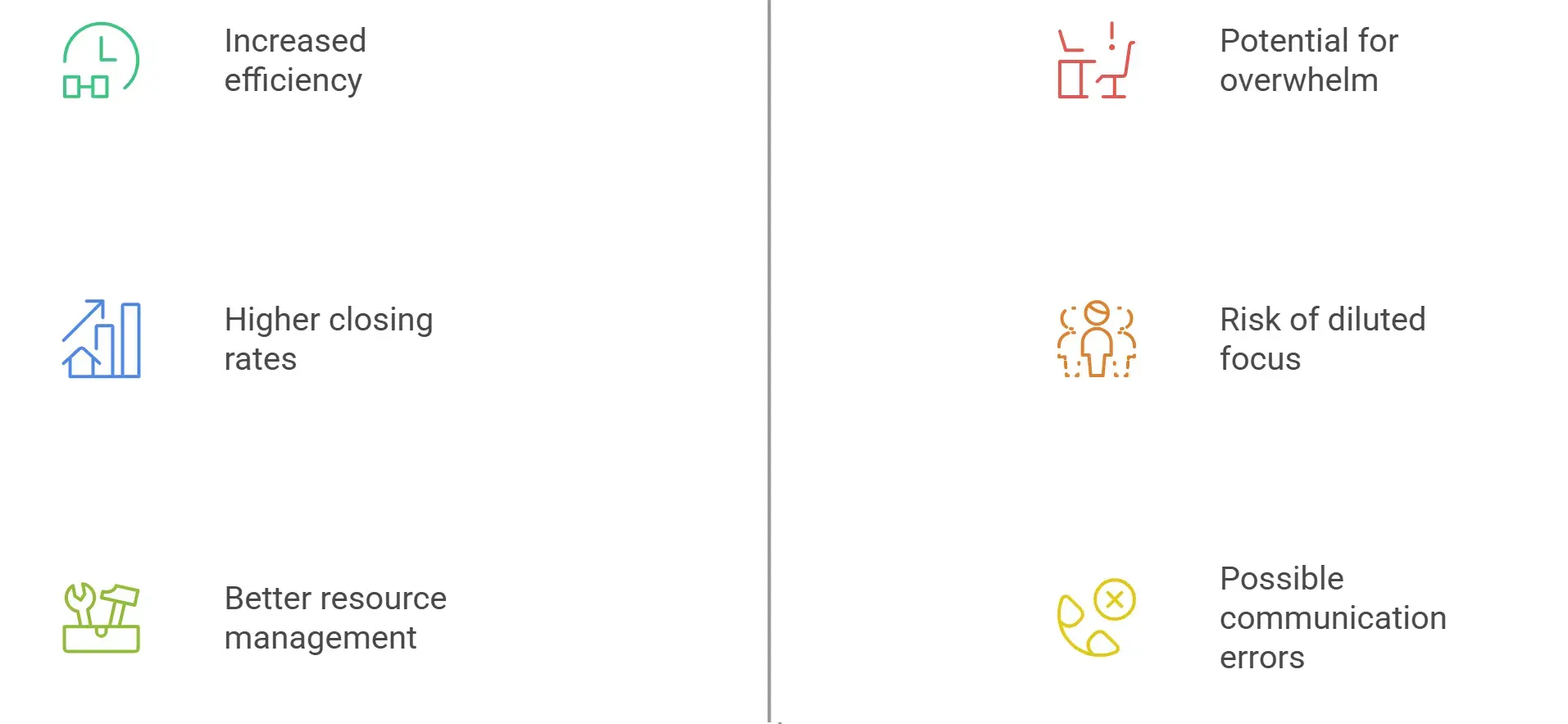
Multithreading in sales is all about connecting with multiple people within a company instead of relying on just one main contact.
It means building relationships with various decision-makers and influencers across different levels of the organization to boost your chances of closing a deal.
In traditional sales, you typically stick to one point of contact throughout the process.
But with multithreading, you take a bigger-picture approach by engaging with different stakeholders who bring their own perspectives and needs to the table.
Why is Multithreading Important in Sales?
Multithreading is a game-changer in sales because it makes the process way more efficient.
A study by InsideSales.com shows that 78% of customers go with the company that responds to them first.
Multithreading helps your team respond faster and keeps multiple communication channels open, so no lead falls through the cracks.
By building connections with several stakeholders in a company, you lower the risk of losing a deal if your main contact goes quiet or leaves.
Instead of relying on just one person, multithreading gives you a team of supporters and decision-makers who are on board with your solution.
It’s also a big deal for pipeline generation. Reaching out to people at different levels of an organization can uncover opportunities you might miss if you only talk to one person.
For instance, one stakeholder might focus on solving a specific issue, while another might point out a bigger problem or a challenge that spans multiple departments—something your solution can address.
This approach not only builds a stronger, more diverse pipeline but also helps boost revenue and speed up the sales cycle.
Plus, multithreading gives you a clearer picture of the company’s pain points and priorities.
Talking to different people means you’ll gather valuable insights into their challenges and goals.
You can then use that info to customize your pitch, giving you a better chance of closing the deal.
Sales Multithreading vs. Single-threaded Selling
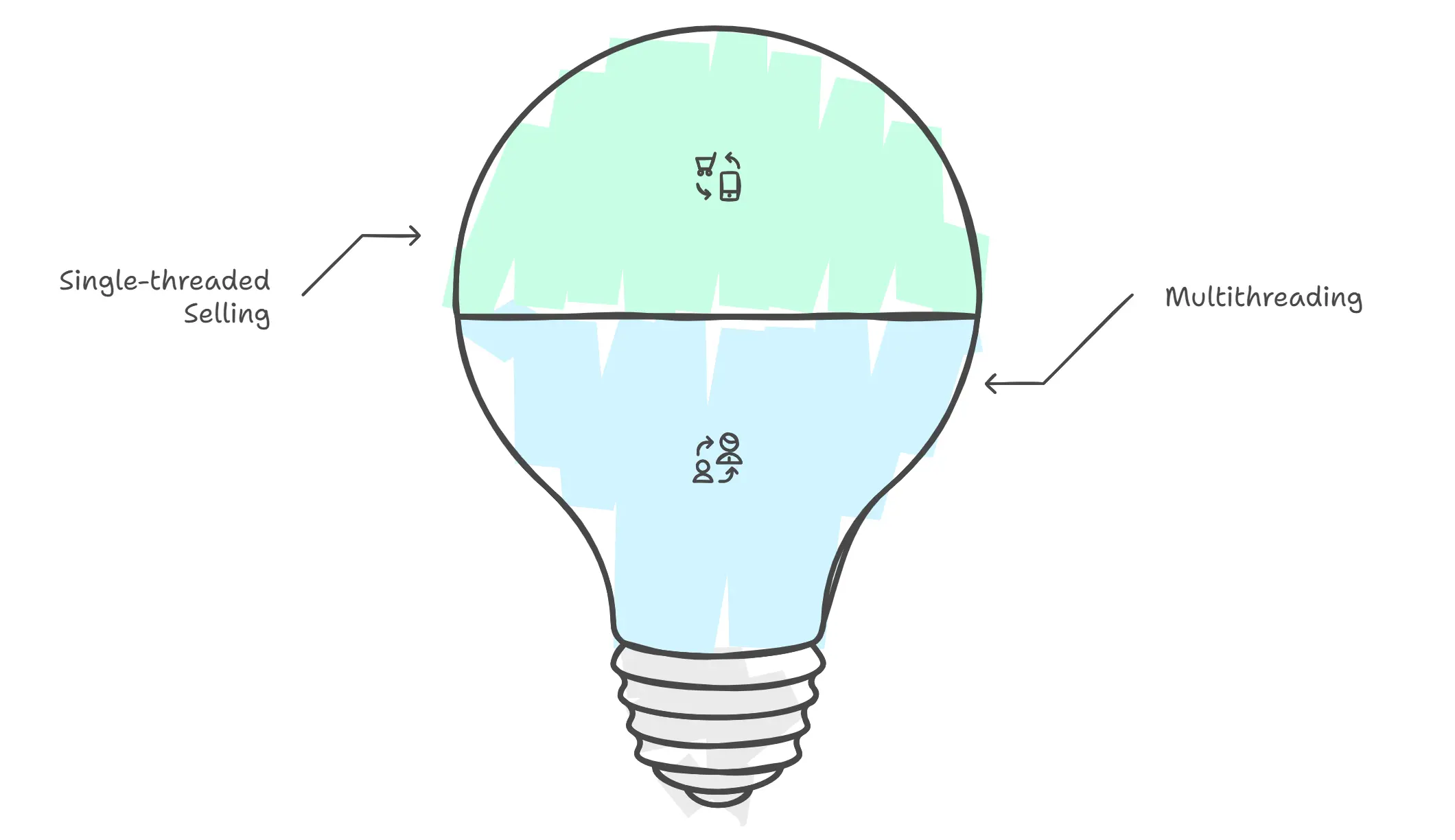
Single-threaded selling is the traditional approach where one salesperson handles the entire sales process and all communication with the customer.
While this can work for small businesses or simpler products, it often falls short for bigger companies or more complex deals.
Sales multithreading, on the other hand, brings in multiple team members to collaborate on building relationships and closing deals.
It’s not just more efficient—it’s also more resilient if something unexpected happens, like a key contact leaving the company.
Why do Sales Teams Use Multithreading?
Sales isn’t a one-person show. It’s about relationships, trust, and strategy. That’s where multithreading comes in.
Simply put, multithreading means having multiple connections with a potential client, instead of relying on one person to champion your deal. This approach can do wonders for your sales process.
For starters, multithreading helps you build stronger relationships.
When more people from your team connect with stakeholders on the client’s side, you’re establishing rapport on different levels.
Maybe your sales rep gels with the COO while your product manager bonds with the client’s technical lead. It’s all about creating a network of trust.
There’s also the element of risk reduction. If your main contact suddenly goes radio silent, you’re not left in the lurch.
You can stay in touch with other stakeholders who are still engaged. This makes it much easier to keep deals moving, even when things on the client’s side shift unexpectedly.
And of course, multithreading can significantly improve your deal success rates.
Whether it’s aligning priorities, answering technical questions, or addressing concerns, having a team selling approach ensures no single person has to shoulder it all.
More voices mean more insights, and the client gets a better sense of what you can offer.
Ultimately, multithreading is a collaborative strategy that strengthens your outreach, lessens your risks, and increases the odds of closing deals.
It’s like diversifying your investments—but for relationships. Safe, smart, and totally effective.
Why Multithreading in Sales Works
A Bigger Pipeline
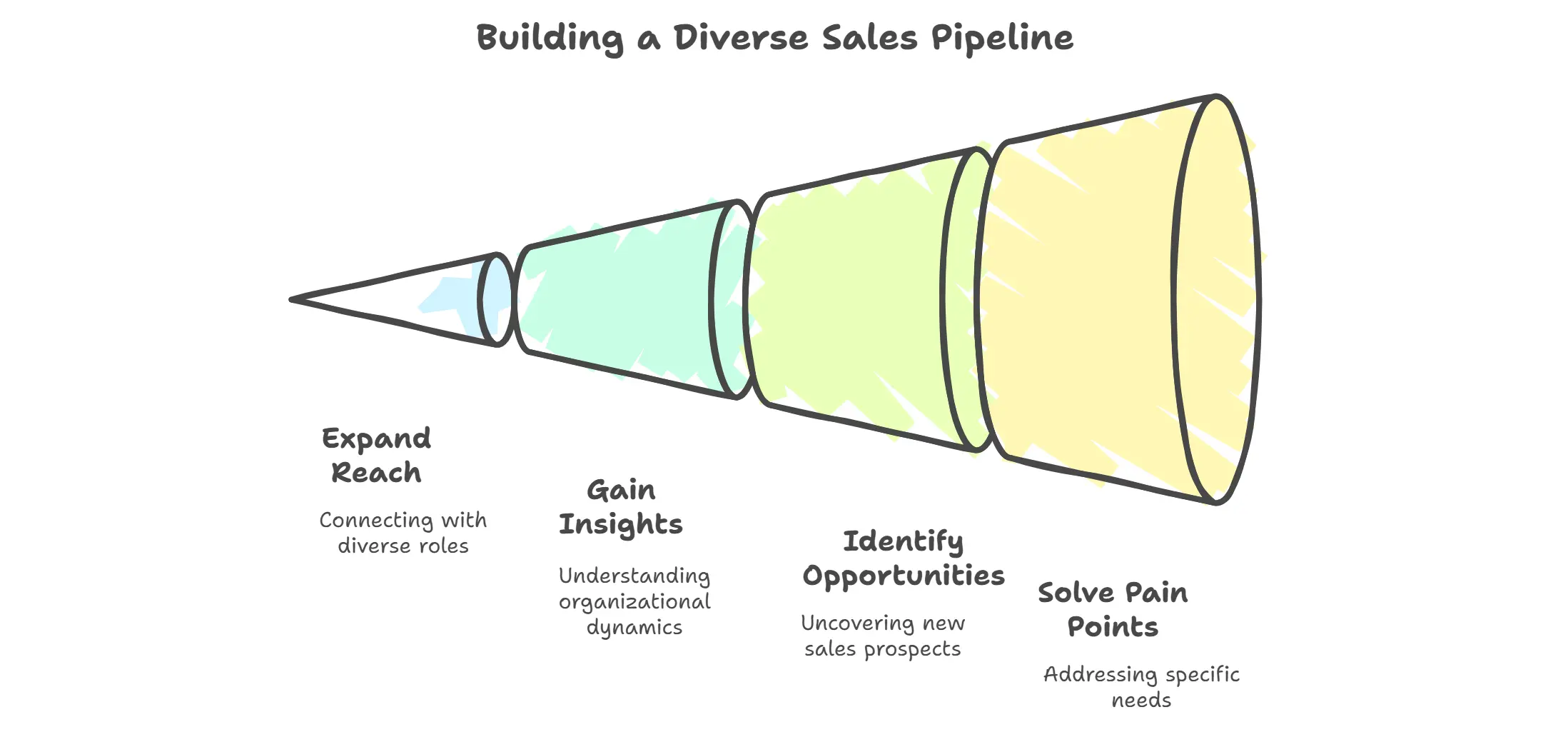
Reaching out to multiple people in a company helps sales reps build a wider, more diverse pool of potential customers.
Instead of relying on just one contact, multithreading means connecting with different people across roles and departments.
This doesn’t just increase your leads—it also gives you valuable insight into how the organization works, what they care about, and how decisions get made.
By building relationships with multiple stakeholders, you can uncover new opportunities, solve different pain points, and boost your chances of reaching the right decision-maker to close the deal.
Lower Risk
When you connect with multiple people in a company, you lower the risk of things stalling if something unexpected happens.
Let’s say your main contact goes quiet, switches roles, or even leaves the company.
With multithreading, you won’t be left scrambling to start over.
Building relationships with several team members ensures the conversation keeps moving, decisions still get made, and deals don’t fall apart.
Plus, it shows you’re invested in the entire team, not just one person.
Better Insights
Talking to different people in the company gives you a clearer picture of their challenges and priorities.
Each stakeholder brings their own perspective, concerns, and goals.
For example, a manager might focus on team productivity, while an executive is more interested in hitting long-term company objectives.
By gathering input from multiple sources, you can spot patterns, understand where priorities overlap or differ, and uncover pain points that might not be obvious at first.
This big-picture view helps you tailor your solution to fit their needs and demonstrate its value.
A More Personalized Pitch
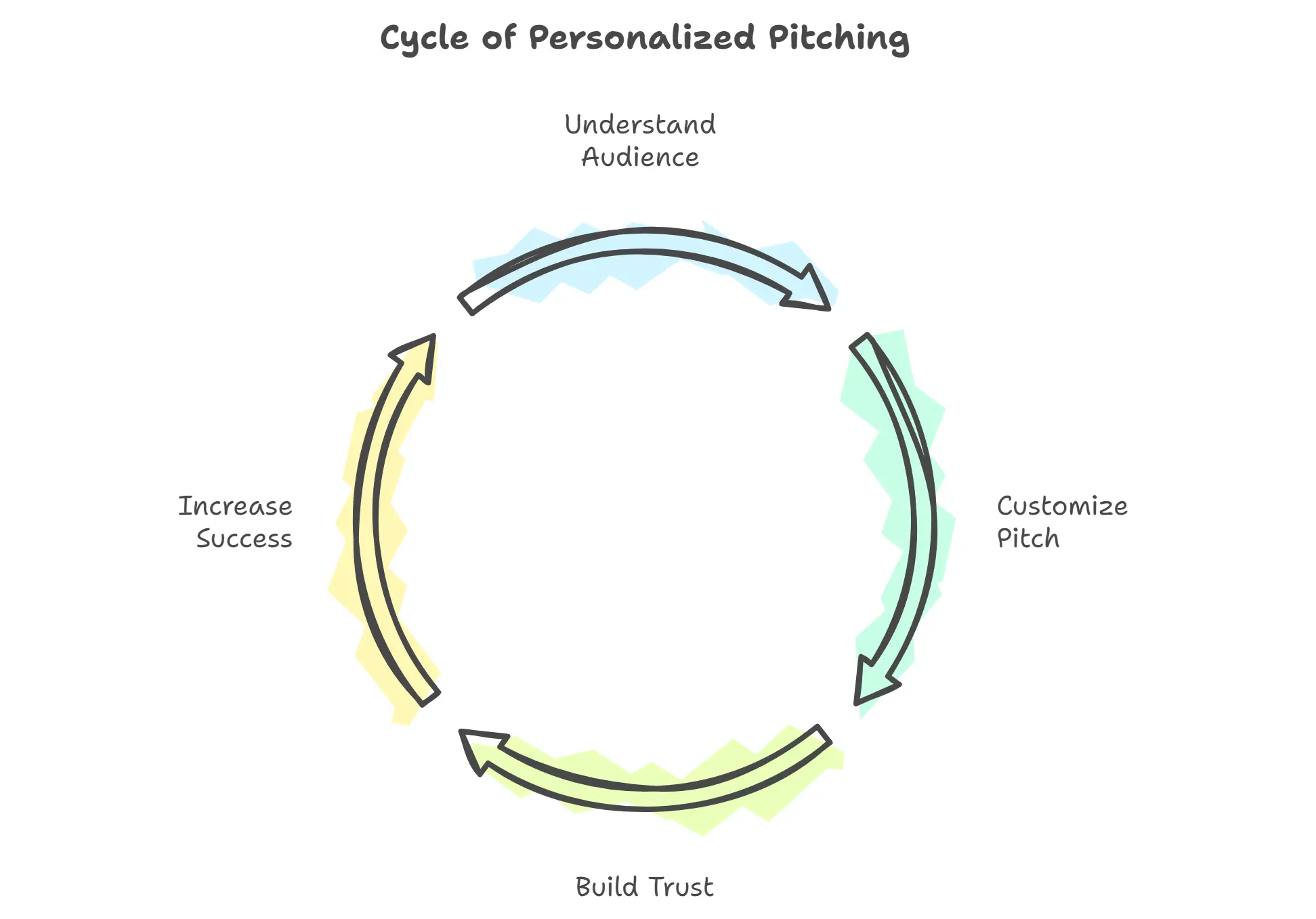
The more people you talk to, the more personalized your pitch can be. Take the time to learn about their challenges, goals, and industry trends.
Whether it’s solving a specific problem, addressing key pain points, or aligning with their objectives, customizing your pitch shows you really understand their business.
This extra effort builds trust and makes it so much easier to show why your solution is the perfect fit. When your pitch hits the mark, your chances of closing the deal go way up.
A Smoother Process
Multithreading keeps the sales process moving even if someone drops off or becomes unavailable.
By building relationships with several people in the organization, you have a safety net if a key contact goes on leave, changes roles, or stops responding.
There’s always someone else who can step in and keep things on track.
This approach not only keeps the momentum going but also strengthens your connection with the company as a whole.
It’s a smart, proactive way to manage relationships, reduce risks, and make sure nothing slips through the cracks.
Overcoming Challenges in Multithreading
While multithreading offers significant benefits, it also comes with its own set of challenges that sales teams need to address in order to succeed. These include:
- Juggling multiple relationships: With more stakeholders involved, building and maintaining strong connections with everyone can become increasingly complex. It requires personalization, regular follow-ups, and ensuring no key contact feels overlooked. Neglecting one relationship can weaken the overall trust within the company.
- Keeping efforts in sync: Multithreading relies heavily on teamwork, meaning the entire sales team must stay aligned. This involves clear communication between team members, shared notes, and collaborative strategies to ensure everyone is working toward the same goals without duplicating efforts or creating confusion.
- Staying on top of things: A larger pipeline of contacts and conversations demands exceptional organization. Sales teams must track every lead, touchpoint, and communication detail to avoid missed opportunities or delays. Utilizing CRM tools and regularly updating records are critical to staying informed and proactive.
- Maintaining consistency: When multiple sales reps are reaching out to various contacts within the same company, there’s always a risk of mixed messaging or inconsistent branding. To prevent this, teams must establish clear messaging guidelines and ensure everyone is aligned on the value proposition, tone, and goals of the outreach.
Strategies for Implementing Multithreading
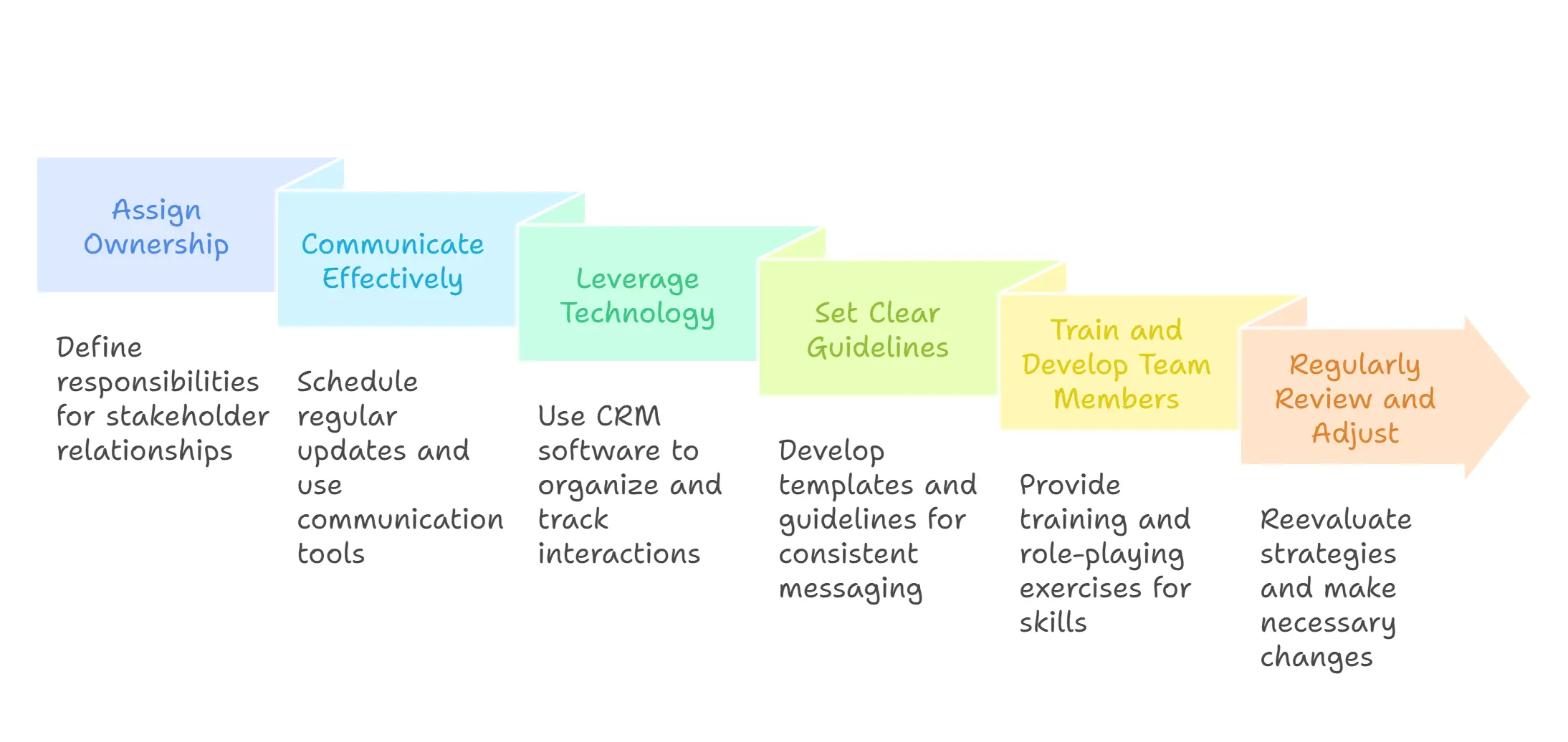
Effective multithreading can transform your sales process by ensuring stronger connections and better results across multiple stakeholders.
Here are some detailed strategies to help your team master it:
Assign ownership
Clearly define who’s responsible for building relationships with specific stakeholders.
This avoids confusion, overlap, or duplicate efforts, ensuring that each stakeholder feels genuinely cared for.
Assigning ownership also ensures accountability, so every team member knows their role in the process.
Communicate effectively
Open communication is key to multithreading success. Schedule regular team meetings to share updates, discuss progress, and refine approaches.
Use shared tools like Slack or Microsoft Teams to maintain an ongoing dialogue and make sure everyone stays on the same page.
Clear communication prevents missteps and allows the team to collaborate efficiently.
Leverage technology
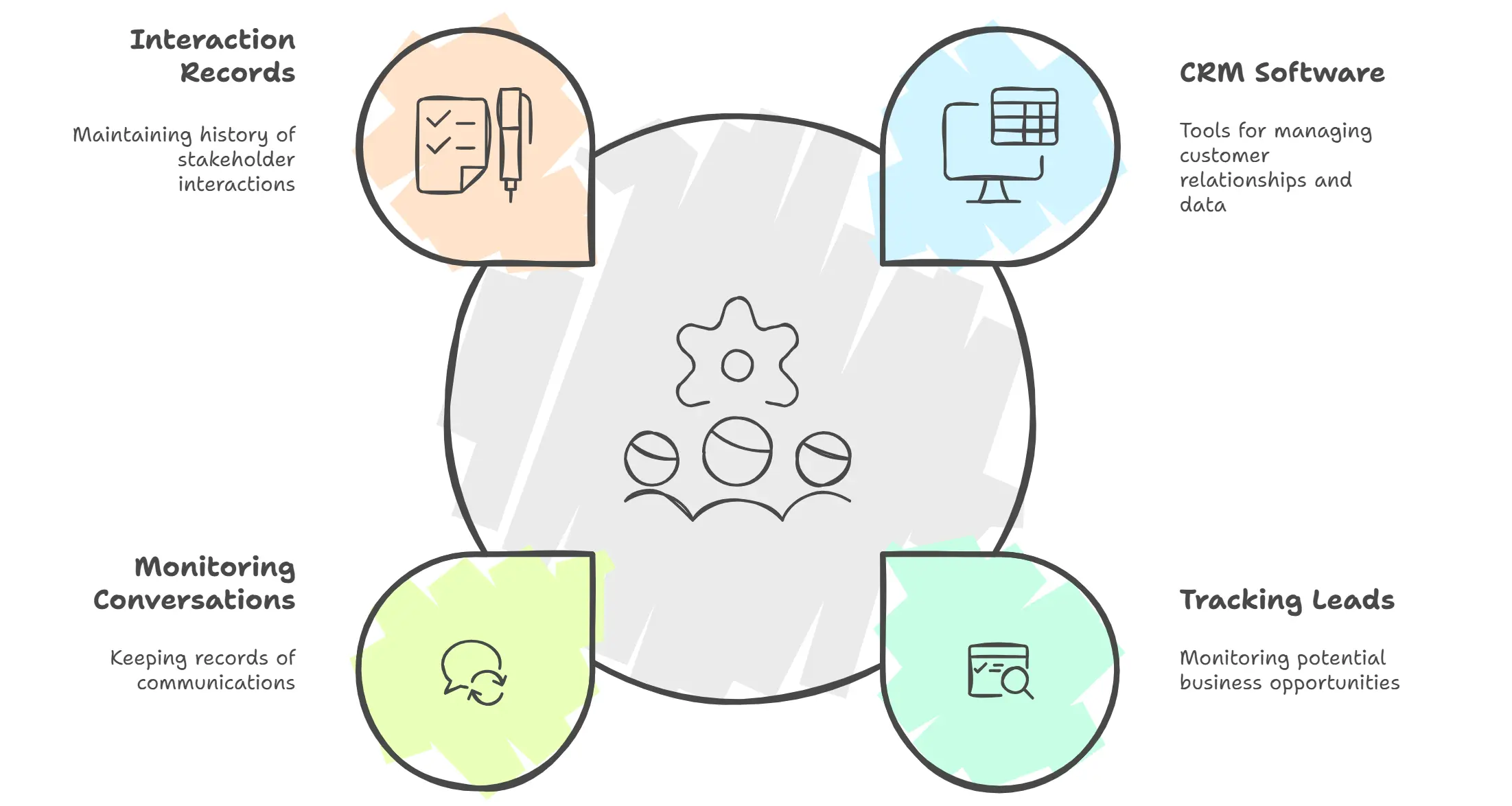
Invest in tools like CRM software to keep everything organized.
These tools allow you to track leads, monitor conversations, and maintain a record of interactions with various stakeholders.
This is especially important for staying coordinated across larger teams, ensuring no opportunity is missed and everyone has the information they need to succeed.
Set clear guidelines
Develop a straightforward framework for messaging and branding.
A consistent tone and unified message not only strengthen your brand but also build trust with stakeholders.
Create templates and guidelines for emails, calls, and presentations to ensure everyone sticks to a professional and cohesive approach.
Train and develop team members
Equip your sales reps with the skills and knowledge they need to effectively manage multithreading.
Provide training in critical areas such as communication, time management, and organization.
Offer role-playing exercises to prepare them for handling various stakeholder scenarios.
A well-trained team will approach each interaction with confidence and professionalism.
Regularly review and adjust
Multithreading isn’t a set-it-and-forget-it process. Reevaluate your strategies regularly as your team grows or new stakeholders are added.
Identify what’s working and what isn’t, and make necessary adjustments to improve efficiency.
Regular reviews ensure your team remains agile and prepared to adapt to evolving circumstances.
Yess - Your Multithreading Partner
Yess is a sales platform that helps your entire team work together to win deals.
Here's what it actually does:
Maps Out Everyone That Matters: In seconds, Yess shows you all the key players at your target account and matches them with the right people from your company who should talk to them. No more guessing who knows who.
Makes Executive Help Dead Simple: Instead of executives having to write emails themselves, your sales reps write everything and executives just click once to approve. This means you can get your senior leaders involved without eating up their time.
Keeps Everything Moving: When your basic outreach isn't working, Yess helps you bring in the big guns - your technical experts, senior leaders, or product specialists. They can jump in quickly to help close deals that are stuck.
Works Where Buyers Are: Forget cold calls. Yess focuses on where decision-makers actually respond - email and LinkedIn. It helps your team coordinate outreach across these channels so you're not just spraying and praying.
The numbers don't lie - companies that get multiple people involved in deals outperform their competition by 50%. Yess makes this easy by turning messy multi-person sales into a simple, repeatable process.
FAQs
What is multithreading?
In sales, multithreading means managing multiple leads or prospects at the same time.
It’s all about keeping communication, tasks, and updates for each lead organized and on track.
Why is multithreading important for sales?
Multithreading helps sales teams make the most of their time and resources by juggling multiple leads efficiently.
This not only boosts productivity but can also drive higher sales numbers.
How does multithreading improve customer experience?
By multithreading, sales teams can respond to leads quickly and with a personal touch.
Customers don’t have to wait forever for a reply or feel ignored, which leads to a better overall experience.
Happy customers are more likely to come back or recommend your business to others.
How can Yess AI help with multithreading?
Yess has a sales engagement platform designed to make multithreading easier.
It offers tools to simplify communication, stay organized, and keep your team working together smoothly.
Plus, Yess provides training resources to sharpen your multithreading skills and help you close more deals.

